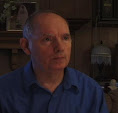Regarding the post "Marfa Lights: new insights," (strange ghost lights in southwest Texas) nobody seems to be certain what causes the flying lights. A new idea is that they resemble ropen lights (of Papua New Guinea) enough to suggest the possibility that they may be the bioluminescence of similar pterosaur-like creatures. They certainly behave like nocturnal predators, returning to the same area near Marfa, Texas, every few weeks or so. But those who firmly believe that extant modern pterosaurs fly through the night skies of North America---even they are not sure that Marfa Lights are bioluminescent pterosaurs.
It's not that dancing Marfa Lights behave like the ropen light of Umboi Island, Papua New Guinea, for that ropen flies alone and glows for close to five-to-six seconds at a time, consistently. (Dancing Marfa Lights may last as long as hours.) But other flying lights in Papua New Guinea are ascribed to pterosaur-like animals like the ropen, and those flying lights sometimes behave somewhat like Marfa Lights: They fly in groups.
Believers in modern bioluminescent pterosaurs are not the only ones capable of observing strange lights, and one does not need to be labeled "creationist" to believe that something strange is creating strange flying lights. Consider the mid-20th Century entomologist (biologist who specializes in insects) Evelyn Cheesman:
In her book The Two Roads of Papua, (published in 1935) Cheesman mentions the strange flying lights that she felt had no reasonable human-origin explanation. She was puzzled by them but saw no easy way to get to the ridge where the lights consistently appeared. Seven decades later, Paul Nation (from Texas but not close to Marfa) videotaped two indava lights and the footage was analyzed by a missile defense physicist: The lights were not from camp fires, nor from car headlights, nor from any airplane, nor any meteor, nor any flashlight. The location of those lights was just south of where strange lights puzzled the British entomologist decades earlier.
March 30, 2010
New Enlightenment on the Marfa Lights
Labels:
cryptozoology,
ghost lights,
Papua New Guinea,
pterosaur,
ropen
Subscribe to:
Post Comments (Atom)

No comments:
Post a Comment
Thank you for your comment.